Portal:Netherlands
Welcome to the Netherlands Portal
Welkom bij het Nederlandportaal!

|

|
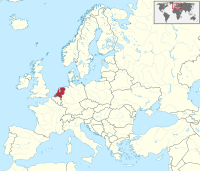
| |
The Netherlands, informally Holland, is a country in Northwestern Europe, with overseas territories in the Caribbean. It is the largest of the four constituent countries of the Kingdom of the Netherlands. The Netherlands consists of twelve provinces; it borders Germany to the east and Belgium to the south, with a North Sea coastline to the north and west. It shares maritime borders with the United Kingdom, Germany, and Belgium. The official language is Dutch, with West Frisian as a secondary official language in the province of Friesland. Dutch, English, and Papiamento are official in the Caribbean territories.
The Netherlands has been a parliamentary constitutional monarchy with a unitary structure since 1848. The country has a tradition of pillarisation (separation of citizens into groups by religion and political beliefs) and a long record of social tolerance, having legalised prostitution and euthanasia, along with maintaining a liberal drug policy. The Netherlands allowed women's suffrage in 1919 and was the first country to legalise same-sex marriage in 2001. Its mixed-market advanced economy has the eleventh-highest per capita income globally. The Hague holds the seat of the States General, Cabinet, and Supreme Court. The Port of Rotterdam is the busiest in Europe. Schiphol is the busiest airport in the Netherlands, and the fourth busiest in Europe. Being a developed country, the Netherlands is a founding member of the European Union, Eurozone, G10, NATO, OECD, and WTO, as well as a part of the Schengen Area and the trilateral Benelux Union. It hosts intergovernmental organisations and international courts, many of which are in The Hague. (Full article...)
Selected biography
Anne and her family moved to Amsterdam in 1933 after the Nazis gained power in Germany, and were trapped by the occupation of the Netherlands, which began in 1940. As persecutions against the Jewish population increased, the family went into hiding in July 1942 in hidden rooms in her father Otto Frank's office building. After two years, the group was betrayed and transported to concentration camps. Seven months after her arrest, Anne Frank died of typhus in the Bergen-Belsen concentration camp, within days of the death of her sister, Margot Frank. Her father Otto, the only survivor of the group, returned to Amsterdam after the war to find that her diary had been saved, and his efforts led to its publication in 1947. It was translated from its original Dutch and first published in English in 1952 as The Diary of a Young Girl.
Did you know (auto-generated)

- ... that the botanist Victor Jacob Koningsberger spoke out against the expulsion of Jewish academics in the occupied Netherlands?
- ... that the Nazis killed more than fifty Dutch nationals in retaliation for the assassinations of Hendrik Seyffardt and Hermannus Reydon by the Dutch resistance?
- ... that the current lighthouse at the Port of Tanjung Kalian was built by a Dutch company in 1862 based on a British design?
- ... that Tjarda Struik is the Netherlands' first female mayor to be nearly blind, and a TikTok influencer?
- ... that "Nahe wollt der Herr uns sein" (The Lord wanted to be close to us), first written in Dutch by Huub Oosterhuis in 1964, was included in the 1975 German hymnal Gotteslob?
- ... that Jopie and Teun Roosenburg led an art colony at Oost Castle that helped Jewish refugees escape the Nazi-occupied Netherlands to Belgium?
Categories
Related portals
Featured content
Extended content
| ||
|---|---|---|
|
This page gives an overview of all featured content ( Featured articles
Featured lists
|
Things you can do

The Dutch Wikiportal is currently under construction. Help would be greatly appreciated!
See also:
Add yourself to the category of Wikipedians located in the Netherlands.
Wikiprojects

|
You are invited to participate in the WikiProject Netherlands, a WikiProject dedicated to developing and improving articles about the Netherlands. |




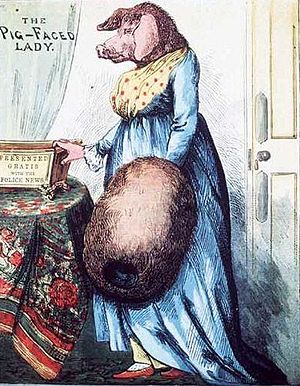
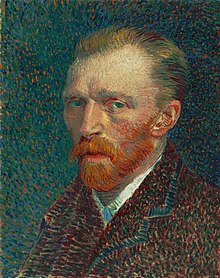
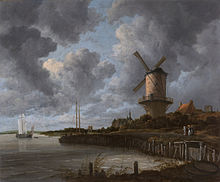
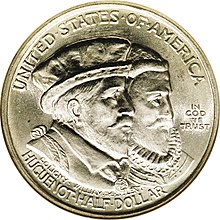


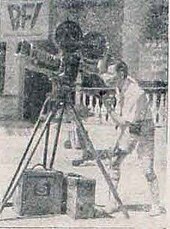



![Image 3 Indonesian rupiah Banknotes: Bank of Indonesia The rupiah is the national currency of Indonesia. Introduced in 1946 by Indonesian nationalists fighting for independence, the currency replaced a version of the Netherlands Indies gulden which had been introduced during the Japanese occupation in World War II. In its early years the rupiah was used in conjunction with other currencies, including a new version of the gulden introduced by the Dutch. Since 1950, it has had a lengthy history of inflation and revaluation. As of August 2018[update] '"`UNIQ--nowiki-0000001D-QINU`"' , the currency—which is issued and controlled by the Bank of Indonesia—is trading for more than 14,600 rupiah to the United States dollar. This note, denominated 50,000 rupiah, is from a 2011 revision of an earlier series. It depicts I Gusti Ngurah Rai, a National Hero of Indonesia, on its obverse, and Bratan Temple on its reverse. See other denominations: Rp 1,000, Rp 2,000, Rp 5,000, Rp 10,000, Rp 20,000, Rp 100,000 More selected pictures](http://upload.wikimedia.org/wikipedia/commons/thumb/8/88/5000_rupiah_bill%2C_2001_series_%282009_date%29%2C_processed%2C_obverse_and_reverse.jpg/120px-5000_rupiah_bill%2C_2001_series_%282009_date%29%2C_processed%2C_obverse_and_reverse.jpg)




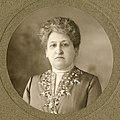

![Image 10 Indonesian rupiah Banknotes: Bank of Indonesia The rupiah is the national currency of Indonesia. Introduced in 1946 by Indonesian nationalists fighting for independence, the currency replaced a version of the Netherlands Indies gulden which had been introduced during the Japanese occupation in World War II. In its early years the rupiah was used in conjunction with other currencies, including a new version of the gulden introduced by the Dutch. Since 1950, it has had a lengthy history of inflation and revaluation. As of August 2018[update] '"`UNIQ--nowiki-0000001C-QINU`"' , the currency—which is issued and controlled by the Bank of Indonesia—is trading for more than 14,600 rupiah to the United States dollar. This note, denominated 50,000 rupiah, is from a 2011 revision of an earlier series. It depicts I Gusti Ngurah Rai, a National Hero of Indonesia, on its obverse, and Bratan Temple on its reverse. See other denominations: Rp 1,000, Rp 2,000, Rp 5,000, Rp 10,000, Rp 20,000, Rp 100,000 More selected pictures](http://upload.wikimedia.org/wikipedia/commons/thumb/f/fd/50000_rupiah_bill%2C_2011_revision_%282013_date%29%2C_processed%2C_obverse%2Breverse.jpg/120px-50000_rupiah_bill%2C_2011_revision_%282013_date%29%2C_processed%2C_obverse%2Breverse.jpg)


































































































































































